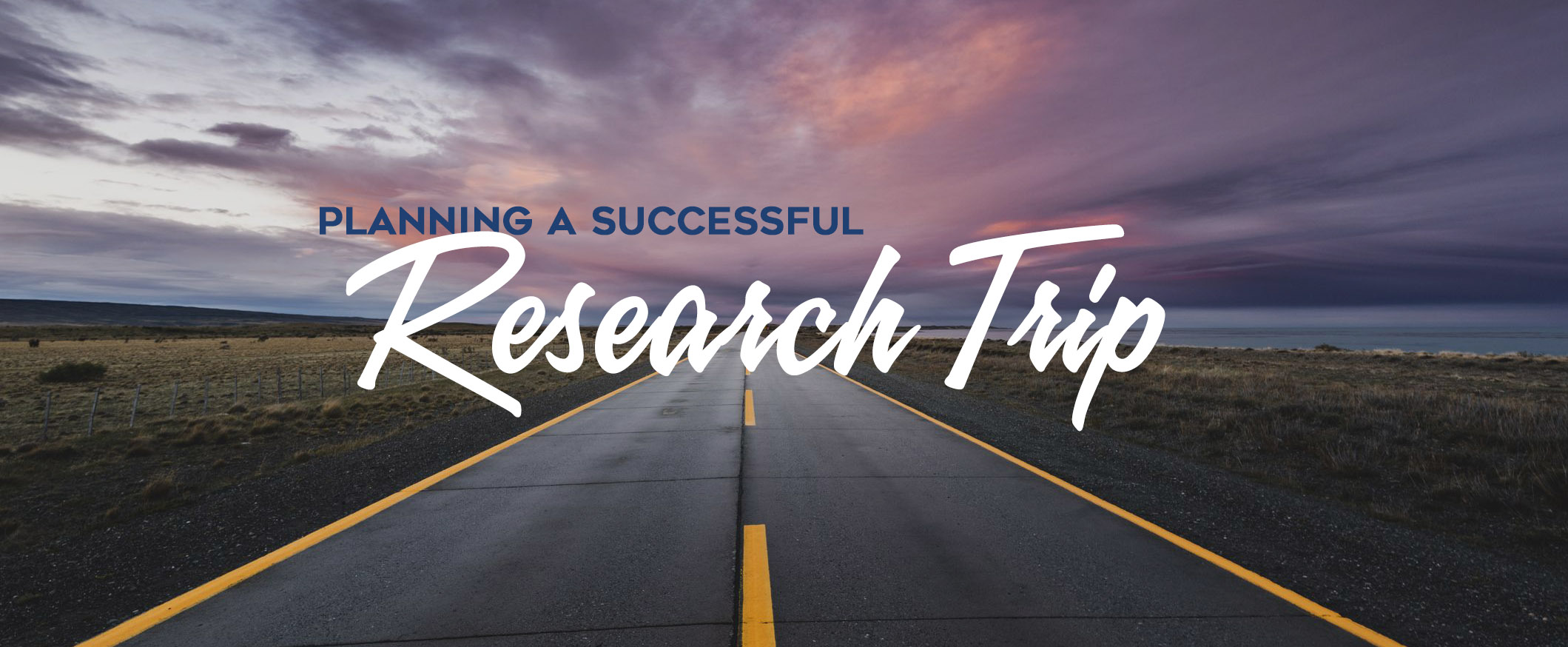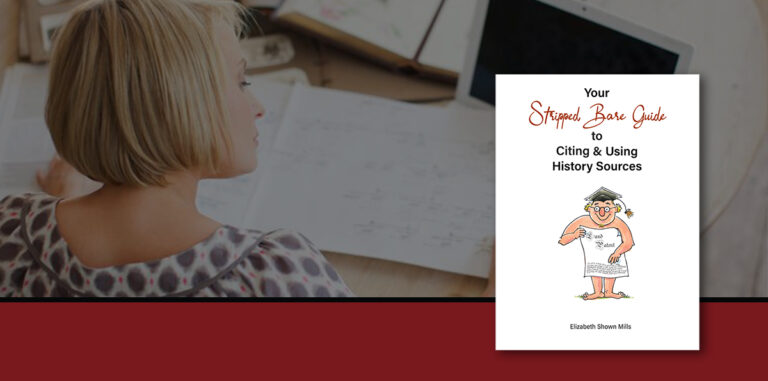
Planning Your Successful Research Trip
by the late Carolyn L. Barkley
(We published an earlier version of this article, by the wonderful librarian and genealogist Carolyn Barkley in 2013. While one or two of the resources Carolyn cites are a bit long in the tooth, most of her tips are timeless.)
If you are intending to travel to the Family History Library in Salt Lake City (or another recently opened repository), planning is essential.
Planning an effective and efficient research trip has always been an important component of a genealogist’s repertoire. With today’s gas prices affecting the cost of your trip more than ever before, however, your ability to plan well has become an even more significant skill. Here are eight tips to help you make that trip as successful as possible. These strategies work whether you are taking a cross-country trip or a morning’s drive to your local library – or even if you’re using your home library – and regardless of whether you’re working on your own family or doing client research.
First, realize that research is a cycle of work with several important steps: planning, collection, organization, analysis, reporting, and then planning once again. Each research trip builds upon the work accomplished in previous trips and sets the stage for work to be accomplished in future ones.
- Your single most important action is to focus on a problem you wish to solve. Then, you need to be able to answer the following questions:
– Who is the one person – or one event – that I want to learn about during this trip?
– What do I already know about this person or event?
– Where is information on this person or event located?
– What research can I do in advance?
Consider all of these questions long before you leave home. If you cannot answer any of them, you are not ready to begin your trip. When you can answer them all, you will endear yourself to librarians and archivists everywhere because you will be able to present your research needs concisely (please, no twenty-year history of your family even if you are excited by your knowledge) and you will be prepared, knowing what is available – or not – at the institution you are visiting. (Note: You may want to prepare two or three problems in case you find that your first problem, despite careful preparation, cannot be resolved, or that you are SO successful in solving the first problem, that you have time to do more.) - Plan where you will go to conduct your research. First, answer the question: “Do I really need to travel to do my research?” Check the institution’s website for collections of online digitized records and databases or the availability of interlibrary loan of microfilm or other resources. (Note: never travel to see microfilm that you can borrow through your home library, or records that are available online.) For example, if I am researching a family in Princess Anne County, Virginia, a place search in the Family History Library catalog would alert me to the fact that all entries are under “Virginia, Virginia Beach (Independent City).” If I used FamilySearch to look for the Pebworth family in Princess Anne County, I would be able to identify 31 records for Pebworth families in Princess Anne. By continuing that search, I would be able to identify which records are not available online and concentrate on those during my research at the Family History Library.
If you decide that you do indeed need to make the trip, check the institution’s website to verify its address, find driving directions and parking information, and its operating hours and record access requirements. Check as well for any unexpected holiday or construction interruptions that may have been scheduled recently. (I ignored the holiday issue to my regret last summer, arriving at the Family History Library for a day and a half of research during a cross-country trip only to find that it would be closed for a full day due to a state holiday – Pioneer Day. Ignore this rule at your peril!) Check to see what other activities are located nearby (special library collections, museums and museum libraries, historical societies, etc.) that might support your research). Decide if you will need to stay overnight (or stay several nights) in order to be successful in completing your research goal. - Plan carefully what to take. I am personally allergic to the idea of the rolling suitcase with all of my files bumping along behind me. If you have focused and defined your research problem(s) well, I believe that you only need to take the files that relate to the specific research focus for your trip. Another method to avoid the dreaded black bag is to make sure that your research has been entered (and is up-to-date) on your laptop or tablet, either through a genealogical program – sources please – or through copies of previous research reports and spreadsheets. For the latter, I am a regular user of Dropbox (or you may already use Evernote or some other version of Cloud storage) for research files. Because these files are available to you on any computer with Internet access, you can access and update your files in real time during your research.
- Make sure you know what the institution’s rules or special requirements are. Are pens allowed; are cameras or scanners allowed? (Did you know that the Library of Congress does not allow musical instruments? – I’m just sayin’!) Make sure you have a picture ID, pencils and erasers, a loose-leaf binder or paper, address labels (they make it much easier to complete request or photocopy slips), and blank labels (indicate source’s bibliographic information and place on back of photocopies). If you are taking a laptop, does the institution have easily accessible electrical outlets? Should you bring a small extension cord? Do you have a surge protector? Is Wi-Fi available? Do they allow you to plug your thumb drive into their equipment (the Family History Library in Salt Lake City does, many public libraries do not)? (Note: Bring lifesavers. I know that food is banned in most libraries, BUT, no matter how healthy you are, you will get a tickle in your throat or a cough in the drier humidity and a lifesaver will live up to its name.)
- Bring forms (on your laptop/tablet and/or in hard copy) to assist you in your research. I strongly recommend using a research log. There are many different varieties that can be found online, in books such as Emily Anne Croom’s Unpuzzling Your Past Workbook: Essential Forms and Letters for All Genealogists. Research logs allow you to document the name of the individual being researched, your objective or problem, the research institution, and the date of your search. It also documents the location or call number of sources you use (whether you found anything in them or not), the source’s bibliographic description, and comments such as “no index,” “page x is missing from this copy,” or “book/microfilm reel, etc. is missing from the collection.” You will also need pedigree charts, family group sheets, and other more specialized abstracting forms depending on the type of research you will be doing.
- Once at the research site, take a few minutes to orient yourself to the facility. Where are the restrooms, lockers, coffee shop, copiers, film readers, computers, etc.? Do you need a copy card? What is the collection layout? (Check on the latter two questions carefully as libraries may rearrange shelving and may (read probably) have changed the copy card system since your last visit!) Are the stacks open access, or will you need to request items from closed stacks (and need to have something to do while you wait for them to be pulled)? Are there finding aids, maps of the facility, etc.? Where is the staff located in case you need assistance? It is also very important that you take care of yourself while you work. Plan to take breaks at specific intervals. I find that after two hours, I need to take a short walk, drink some water, rest my eyes, and reorder my thoughts. Make sure you take time for lunch and get out into fresh air and, hopefully, sunshine. You will be more alert during the afternoon if you do.
- When you have finished your research, organize your materials–research logs, forms, photocopies, and any spreadsheets or chronology tables you might have created–so that you can analyze your findings. I recommend using chronology tables as they often will provide visual clues to gaps in your research or to the fact that you might have found more than one person with the same name. I use a simple MS Word table with date, event (name and action), and source of the information. This table also tells me if my documentation is from original sources, rather than from too many secondary reports of the event.
- Always, always, always analyze what you have found during your research trip. This step is very often over-looked. Think of the many family trees you’ve seen online where the mother’s birth date is chronologically after the birth date of her children. Simple analysis would have prevented this type of error. Be sure to answer the following questions:
– Is your information from a primary or secondary source?
– Does the information add to or conflict with what you already know?
– If the problem has not been solved, or has led (inevitably) to another research problem, what further work is required? - Write a research report summarizing your trip. Again, this step is often overlooked or deferred, but is important for your own research, not just for client work. In your report, restate the object of your research (your research problem), what you knew when you began the work, the institution(s) in which you researched, the sources you consulted, and your findings and analysis. Outline future work. Attach all of the copies that document your findings. You will have all of this information easily at hand if you kept a detailed research log, annotated each of your copies and supporting documentation, and analyzed your work. The report is simply a way to organize your thoughts and documentation so that the next time you decide to work on this particular research problem, you can simply remove the report from the file and review your previous research as well as your notes about future work.
For further information on many of the topics mentioned here, check out the following sources:
Genealogy at a Glance series (Store – Genealogical.com.). These concise guides are perfect for travel with. Check the extensive list of topics available, written by experts in their fields. If you are going to the Family History Library, particularly if this trip is your first, you will want to use Genealogy at a Glance: Family History Library Research. Genealogy at a Glance: Family History Library Research – Genealogical.com
The Library: a Guide to the LDS Family History Library, edited by Johni Cerny and Wendy Elliott (Ancestry, 1988).
The Guide to FamilySearch Online, by James L. Tanner (Bookmark Graphics, 2011).
Quick Sheet series (Genealogical Publishing Co.). Elizabeth Shown Mills has authored a series of concise guides in such topic areas as Genealogical Problem Analysis: a Strategic Plan; Citing Online Historical Resources Evidence! Style*; and The Historical Biographer’s Guide to the Research Process, among others. Store – Genealogical.com
Your Guide to the Family History Library, by Paula Stuart Warren and James W. Warren, (Betterway Books, 2001).




